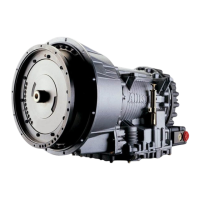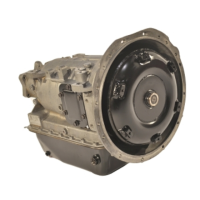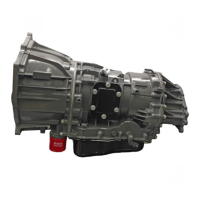If the vehicle is stuck in deep sand, snow, or mud, it may be possible to rock it
out using the following procedure:
1. Shift to D (Drive) and apply steady, light throttle (never full throttle).
2. When the vehicle has rocked forward as far as it will go, apply and hold
the vehicle service brakes.
3. When engine has returned to idle, select R (Reverse).
4. Release the brakes and apply a steady, light throttle allowing the vehicle to
rock in R (Reverse) as far as it will go.
5. Again, apply and hold the service brakes and allow the engine to return to
idle.
This procedure may be repeated in D (Drive) and R (Reverse) if each directional
shift continues to move the vehicle a greater distance. Never make
N (Neutral)-to-D (Drive) or directional shift changes when the engine rpm is
above idle.
HIGH FLUID TEMPERATURE
The transmission is considered to be overheated when any of the following
temperatures are exceeded:
Sump fluid 121°C (250°F)
Fluid to cooler 149°C (300°F)
Retarder out fluid 165°C (330°F)
If the transmission overheats during normal operations, check the fluid level in the
transmission. Refer to the fluid level check procedures described in the CARE
AND MAINTENANCE section.
CAUTION: The engine should never be operated for more than
10 seconds at full throttle with the transmission in range and the output
stalled. Prolonged operation of this type will cause the transmission fluid
temperature to become excessively high and will cause severe overheat
damage to the transmission.
If the engine temperature gauge indicates a high temperature, the transmission is
probably overheated. Stop the vehicle and check the cooling system. If it appears
to be functioning properly, run the engine at 1200–1500 rpm with the transmission
in N (Neutral). This should reduce the transmission and engine temperatures to
normal operating levels in 2 or 3 minutes. If temperatures do not decrease, reduce
the engine rpm.
43
